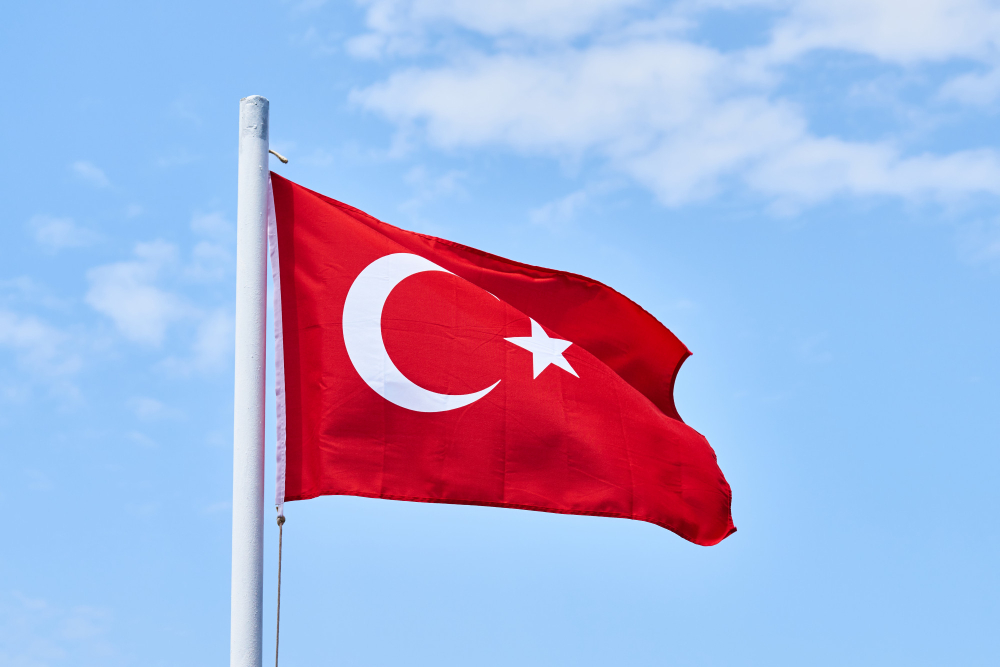Original article (in Croatian) was published on 16/02/2023
Earthquakes cannot be predicted, so even the closing down the consulate in Turkey before the evastating earthquake had nothing to do with it.
“Why did the United States and other Western countries closed down their diplomatic consulates a few days before the earthquake?” – this is the title of an article (archived here) published on the web portal Epoha, which Faktograf has repeatedly found to be spreading disinformation.
“Let’s finally resolve the issues surrounding the earthquake in Turkey. Catastrophic earthquake in Turkey and Syria. Thousands of dead. A few days before the earthquake, the US and other Western countries closed down many of their diplomatic consulates in Turkey due to “danger of terrorist attacks”, states the beginning of the text.

According to data from the CrowdTangle platform, the post was shared on two Facebook pages, and received 18 shares, 11 comments and 54 other reactions.
Our reader also asked us about why some Western countries closed their consulates before the strong earthquake that hit Turkey and Syria on February 6.
Although the author of the text tries to insinuate that consulates of the USA and other Western countries closed their doors because it was known that Turkey would be hit by a strong earthquake, there is no evidence for such a thing. Also, it is known that earthquakes cannot be predicted.
Namely, at the end of January, nine Western countries either closed their consulates or issued travel warnings to citizens visiting Turkey, citing security threats as the reason.
How did countries explain the closure of consulates?
Among the first consulates to be closed was that of the United Kingdom, writes the web portal Schengenvisainfo.com. The British Foreign Office has also updated its travel advice to Turkey, warning citizens of the possible risks when traveling to the country. “There is a possibility that citizens from Western countries may be targeted or caught in attacks, especially in large cities”, the British ministry warned.
The German consulate in Turkey stopped working on the same day, canceling the appointments for issuing visas and passports, without specifying when it will reopen. On the other hand, the German embassy in Ankara remains open.
“Following recent cases in several European capitals where Qur’an was publicly burned or destroyed, security agencies believe the risk of terrorist attacks in Istanbul has increased”, officials said in a statement explaining their decision.
The consulate also advised German citizens living in Turkey and German tourists to avoid the central Istanbul district of Beyoglu and Taksim Square these days, as well as areas where “international crowds” congregate.
The Swedish and Dutch consulates also stopped receiving visitors for the same reasons. While the French consulate announced on February 2 that their consulate will be closed for two days due to security threats.
The US Embassy in Turkey first issued a security alert to its citizens on January 27. “Following recent incidents in Europe with the burning of the Qur’an, the US government is warning its citizens of possible revenge terrorist attacks on places of worship in Turkey. Terrorists could strike with little or no warning, targeting places of worship or places frequented by Westerners”, they said in the warning.
Three days later, on January 30, the US Embassy in Turkey issued a new, updated security alert, now specifying Istanbul as a possible threat location.
“The US government is warning its citizens of possible imminent retaliatory terrorist attacks against churches, synagogues and diplomatic missions in Istanbul or other places frequented by Westerners, especially in the Beyoglu, Galata, Taksim and Istiklal areas. Turkish authorities are investigating this case”, they wrote.
Turkey’s reaction to the closure of consulates
Turkish Foreign Minister Mevlut Cavusoglu suggested that countries may have been trying to portray Turkey as an unstable country when they temporarily closed embassies and consulates and issued travel warnings following the Qur’an-burning incidents in Europe, AlJazeera reported. Those measures angered Turkey, which on Thursday summoned the ambassadors of those countries in protest. The interior minister accused the countries of waging “psychological warfare” and trying to destroy the Turkish tourism industry.
“They say there is a terrorist threat… But when we ask what was the source of the information and who could be the perpetrators of such attacks, they did not share any information with our intelligence and security bodies”, Turkish Foreign Minister Mevlut Cavusoglu said.
Recall that last month, extreme right-wing activists burned copies of the Muslim holy book, the Qur’an, in Sweden, Denmark and the Netherlands, which prompted Turkey to suspend negotiations during which Turkey was supposed to withdraw its objections to the entry of Sweden and Finland into NATO.
Turkey has already increased security measures around foreign embassies and consulates after the Qur’an burning incidents, Cavusoglu said.
Cavusoglu said that nine countries did not share information about possible security threats with the Turkish authorities. He also said which countries are involved: USA, the Netherlands, Switzerland, Sweden, Great Britain, Germany, Belgium, France and Italy.
Earthquakes are impossible to predict
“A certain Frank Hoogerbeets announced the impact of the “earthquake” on Twitter two days before the earthquake, and the Turkish seismologists remained silent? The earthquake hit a place in Turkey and Syria where the Kurds are the vast majority… and no one is showing Syria. The sister of the Syrian prime minister was killed in the earthquake. The earthquake comes just days after Erdoğan’s threat to pull Turkey out of NATO and support Russia. Just a few days before the earthquake, an American warship with 500 soldiers sailed into the Bosphorus. For the sake of comparison, in 1999, Istanbul was struck with a devastating earthquake that took the lives of 15 thousand people and at that time there was an American warship there… After the collapse of “Nord Stream” 1 and 2, the “Turkey Stream” gas pipeline remained Europe’s last hope for the much-needed Russian gas to reach European countries… then the earthquake has just extinguished that last hope of the EU. Recorded at the time of the strongest earthquake in the epicentral area, a strange light of unknown origin. Is there a possibility that the earthquake was deliberately caused by the use of some kind of seismic weapon? Conspiracy theory or a real possibility?”, writes the author of the article published on Epoha.
Faktograf wrote earlier that earthquakes are impossible to predict. There is no scientifically based knowledge about the next big earthquake. The Seismological Service of Croatia has confirmed this on several occasions, most often after the great earthquake in Zagreb in 2020.
“We cannot predict earthquakes, any reports that a stronger earthquake will follow are not correct! There is a probability of a stronger earthquake, but it is extremely small. We can expect subsequent weaker earthquakes”, they wrote on Twitter at the time.
The phenomenon called “earthquake lights”
As for the “strange light” the author refers to, it is an interesting phenomenon that appeared in the sky just before the earthquake in Turkey and Syria on February 6. The lights resemble lightning bolts before a storm. This phenomenon is nothing new, although it still baffles scientists. Of course, this phenomenon is also fertile ground for conspiracy theories.
National Geographic wrote about this phenomenon a few years ago, offering scientific answers.
When an 8.1 magnitude earthquake struck Mexico in 2017, eerie images of green and blue lights in the sky appeared on social media. The so-called earthquake lights in Mexico were another mysterious example of a phenomenon that had baffled experts for hundreds of years.
Like ball lightning, earthquake lights are relatively rare, and it’s hard for scientists to explain exactly what they are. Complicating matters is that not all cases look the same, prompting explanations that range from simple lightning to UFOs and otherworldly phenomena.
“Lights can take on many different shapes, forms and colours”, said Friedemann Freund, a professor of physics at San Jose State University and a researcher at NASA’s Ames Research Center, in a 2014 interview with National Geographic.
Earthquake lights through history
Freund and his colleagues studied 65 reports of such lights dating back to 1600, publishing their findings in 2014 in the journal Seismological Research Letters.
For example, on November 12, 1988, people reported a purple-pink ball of light along the St. Lawrence river in Quebec, 11 days before the strong earthquake. In Pisco, Peru, the lights appeared in the form of bright flashes that lit up the sky, captured by security cameras ahead of the 2007 magnitude 8.0 earthquake. Even before the 2009 earthquake in L’Aquila, Italy, small flames of light were seen flickering above the stone streets.
The US Geological Survey is cautious about whether earthquake lights or EQLs exist. “Geophysicists differ on the extent to which individual reports of unusual lights at the time and near the epicentre of an earthquake actually represent an EQL”, the institute states on its website: “Some doubt that any single report constitutes hard evidence for an EQL, while others think that at least some reports convincingly match EQL”. Freund agrees with the latter one.
Analyzing 65 light incidents at the time of the earthquake in a 2014 study, Freund and his colleagues theorized that the lights are caused by electrical charges that are activated in certain types of rock during seismic activity.
There is no consensus among scientists as to why earthquake lights occur
“It’s as if you turned on a battery in the Earth’s crust”, Freund points out. For example, basaltic and igneous (gabbro) rocks have tiny defects in their crystals that could release an electrical charge into the air. Conditions favourable to light exist in less than 0.5 percent of earthquakes worldwide, scientists estimate, which would explain why they were relatively rare. They also noticed that earthquake lights appear more often before or during an earthquake, and not as much after.
An earlier study indicated that tectonic stress created the so-called piezoelectric effect, in which quartz-containing rocks produce strong electric fields when compressed in a certain way. But one of the complications in studying earthquake lights is, of course, that they are unpredictable and short-lived. In an attempt to get around this, some scientists have tried to recreate the phenomenon in the laboratory.
In a study led by a physicist at Rutgers University in New Jersey and published in 2014, grains of different materials—flour, plastic discs, gypsum—create voltage spikes when shaken. Scientists attributed this effect to friction between the grains, which would contradict both the piezoelectric theory and Freund’s theory. As long as conflicting scientific theories emerge, the debate about the causes of seismic lights remains open, the web portal Index reports.
In conclusion, the text published on Epoha lacks context, and the author insinuates that Western countries knew about the earthquake a few days before it happened. There is no evidence for such a thing, and as is already known from numerous warnings by seismologists, earthquakes cannot be predicted. Also, earthquake lights are a phenomenon that is known to scientists and has appeared earlier in history. However, given that there is no consensus among scientists as to why it occurs, it is the basis for numerous conspiracy theories.



